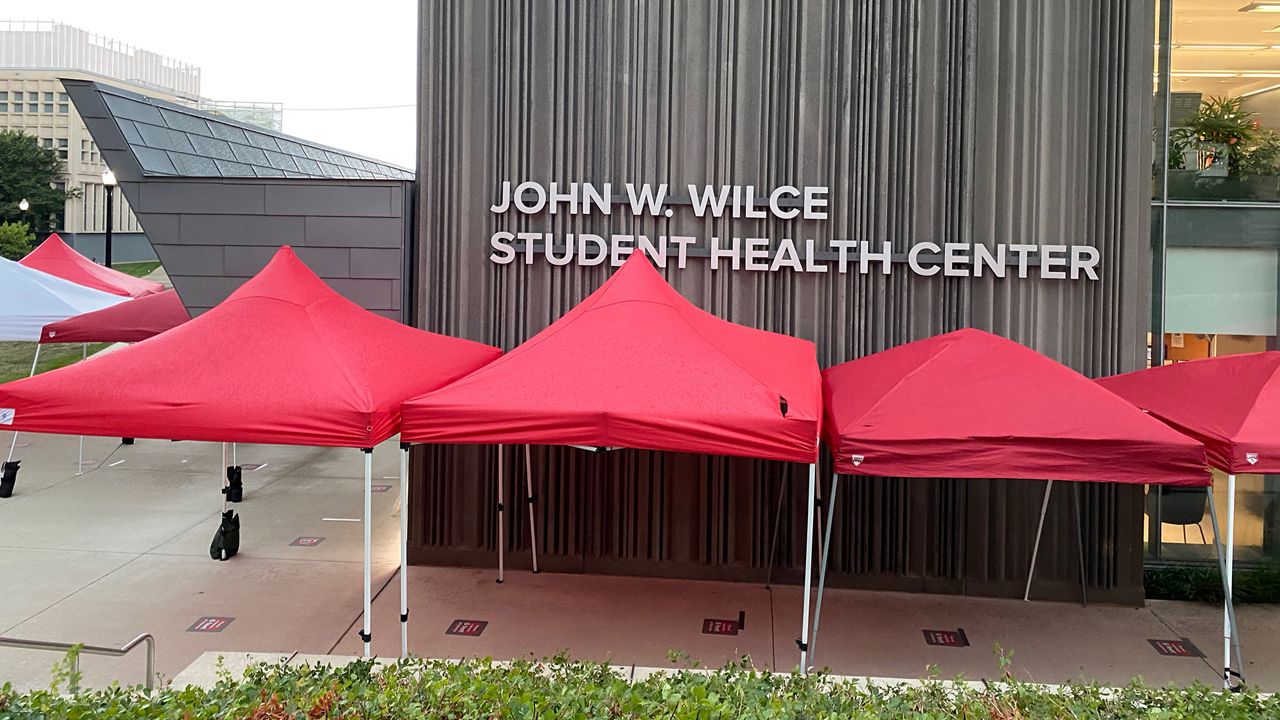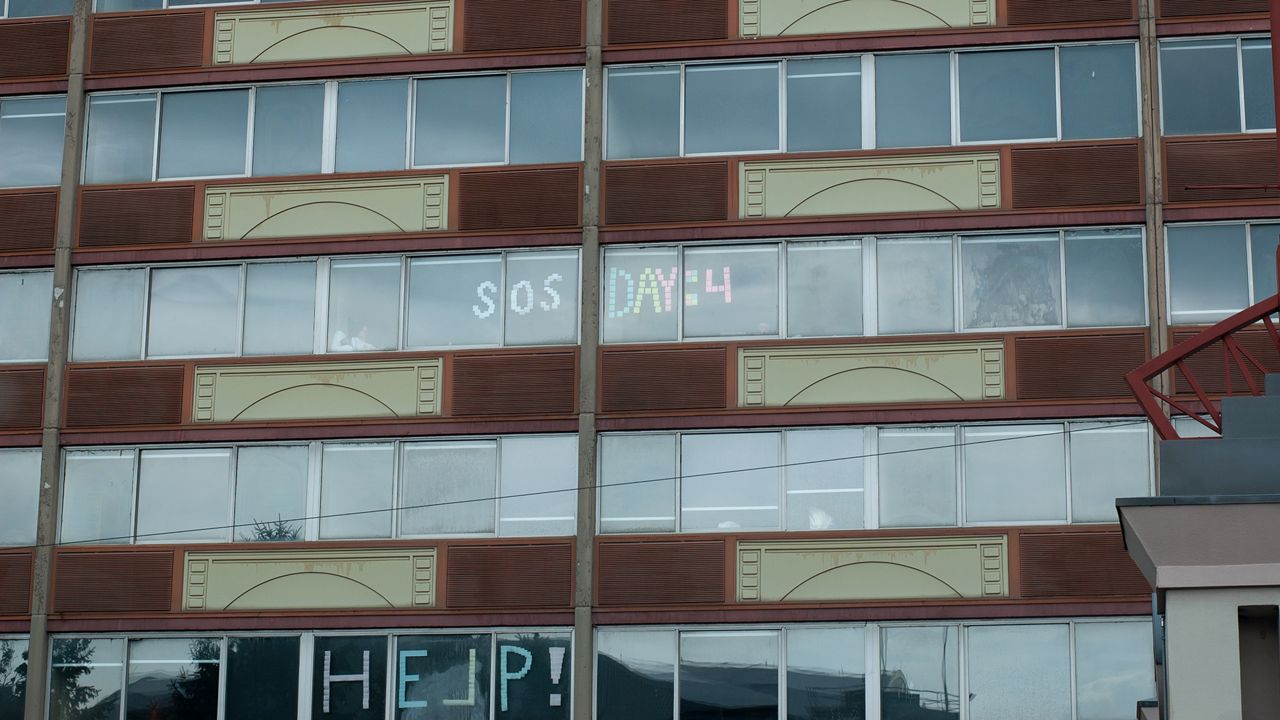COLUMBUS, Ohio — Ohio State students fear their days on campus are numbered with COVID-19 already spreading rapidly among students, resulting in 495 cases through just one week of classes.
The campus’s COVID-19 outbreak is now the second largest active cluster of cases anywhere in the state, according to an Ohio Department of Health spokesperson. The state’s largest outbreak is also a college campus, the University of Dayton, which is reporting 638 active student cases.
Ohio State's student positivity rate surged to 5.86 percent for the most recent 24-hour period of testing, the university's COVID-19 dashboard showed Saturday evening. The university had said earlier in the month it wanted to keep its positivity rate well below 5.5 percent in order for students to stay on campus. Officials later clarified the school would look at a number of criteria in addition to the positivity rate before switching to e-learning.
On Friday afternoon, more than a dozen students were seen arriving at an Ohio State quarantine dorm. Some arrived alone on foot bringing only what they could carry. Others were dropped off with bags and backpacks. At one point, a whole group of students showed up to quarantine in a car filled to the brim with mattress toppers, pillows, and suitcases.
The university released initial testing results on Tuesday showing a 1.16 percent positivity rate for student testing. On Thursday, President-elect Kristina Johnson said in a school email the positivity rate had shot up to 3.1 percent. In an update Friday, the student positivity rate for the previous 24-hour period had risen to 3.74 percent.
One group of roommates has made bets on when they will get the dreaded email that the university is sending student’s home and shifting to e-learning. Sophomore Jacob Gerken said his most optimistic roommate’s guess was Sept. 15. Others expect it to be more imminent.

“It is concerning that the positivity rate jumped 2 percent overnight,” Gerken said. “They're definitely going to have to make some changes pretty soon. I would be very surprised if we make it through the entire semester without being fully online.”
Three students said they think Ohio State might try to keep campus open until Sept. 4, which is a cutoff for tuition refunds. As the semester progresses, students who choose to defer enrollment may only be eligible for lesser partial tuition refunds.
Reagan Beckett, an Ohio State junior and a resident advisor, expects the decision to come very soon.
“As quickly as the positivity rate is rising, I wouldn’t be surprised if campus is shut down by Monday,” she said.
Beckett witnessed concerning behavior from students this week, she said. On Thursday night, she counted five parties off-campus, and she recently had to break up a dorm party in the residence hall where she is a Resident Assistant. Social gatherings have continued even after the university issued 228 suspensions for partying earlier in the week, several students said.
“They were not frat party ragers, but there were like 20 or 30 people out on the front lawn playing beer pong, blasting music,” Beckett said. “I just don't understand why. They know that people are reporting parties; they know that people are getting suspended. They know that there is a chance of us getting kicked off campus again. Do they just not care about the consequences?”
On Friday, the university announced that student organizations are prohibited from meeting in-person until at least Sept. 9.
To contain the spread of COVID-19, experts stress the important of maintaining a low "R-naught" value, or the average number of additional infections stemming from each case. Ohio State’s numbers have risen so quickly in part due to spread among roommates who live in close-quarters housing.
When a student tests positive, their roommate will likely have to quarantine for two weeks, whether or not they show symptoms. For students living off-campus, one student’s positive test typically means a group of students is considered exposed, not to mention any friends, coworkers, or other contacts who may also need to quarantine.
Zach Vales, a third-year, started quarantining in his off-campus apartment yesterday after one of his roommates tested positive. He is experiencing mild symptoms—headache, sore throat, and a light cough—as is one of his other roommates. The fourth roommate so far feels fine.
He and his roommates are wearing masks in the common areas of their apartment when they need to prepare food in the kitchen or go to the bathroom, and they are relying on delivery apps for anything they may need. But Vales said he felt it was nearly inevitable all four would get sick once the first roommate tested positive.

Junior Kyle VanLuit said about half of the student body is taking the virus seriously, but others are defying health guidance and ignoring common sense. He expects campus to get shut down any day.
Two of VanLuit’s roommates are working, and one just had a coworker test positive. VanLuit worries he might get sick himself.
“It's very possible I could catch it any day,” he said Friday, just after getting a nasal swab as part of the school’s random surveillance testing of asymptomatic students. “If I do get it, I just hope my symptoms aren’t too severe.”
On Thursday, Ohio State announced it would expand that surveillance testing of students who live off-campus up to 8,000 tests each week. All students who live in university housing, about 12,000 people, are tested weekly.
Others like Aashwin Basnet, a second-year physics graduate student, are getting tested when they report active symptoms. Basnet went to get a test after experiencing a mild headache, sore throat, fatigue and body aches for the past couple days.
“With the numbers increasing, and with the President’s email yesterday, I’m a bit concerned about being at the university,” he said.



